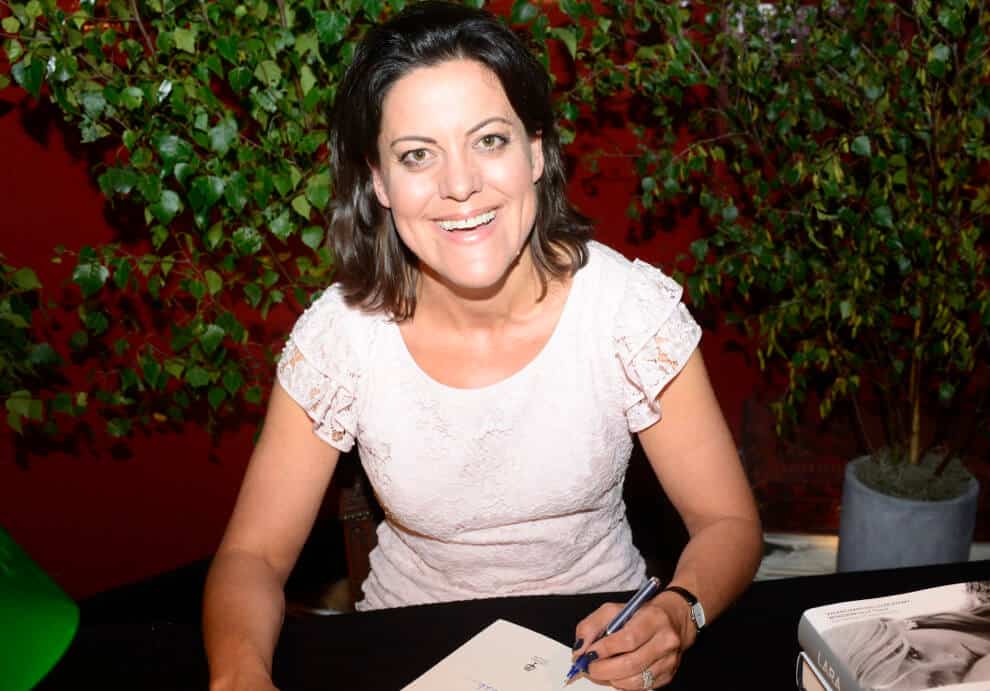Ellie-Mae Hammond speaks to Berkshire local Anna Pasternak, a best-selling author and journalist, who’s making it her mission to rehabilitate the names of overlooked women of the past
Writer, member of the famous Pasternak Family, regular contributor to national newspapers, and the New York Time’s bestselling author of Princess in Love and Lara, Anna Pasternak Is using her journalistic skills to recover and rehabilitate the tarnished reputations of some of history’s most iconic women, and unveil the truth behind these quintessential faces.
“Throughout my career as a writer and journalist, I have contributed to every national newspaper and written for most glossy magazines and now I am known as a historian and royal biographer, due to the publication of my last two books – Lara; The Untold Love Story That Inspired Doctor Zhivago and The American Duchess; The Real Wallis Simpson,” Pasternak says. “At 26, I wrote the book, Princess in Love, about Princess Diana’s affair with Major James Hewitt. I met Hewitt socially and he asked me to tell the truth of his relationship with Princess Diana in 1984. This was controversial at the time, but Hewitt would never have spoken out without Diana’s blessing.”

After leaving Oxford University, Pasternak’s publishing career started when she went to work for Quartet Books, a small publishing company in the heart of London, run by the flamboyant figure that is Naim Attallah. “It was gloriously politically incorrect,” she laughs. “We were paid a pittance, but Attallah threw amazing book launches, where all the stars of the media, government, social and literary worlds were present. He wanted us to make contacts to go on and forge interesting careers. From there, I went to work for Londoners Diary on the Evening Standard newspaper and then I moved into feature writing.”
Pasternak’s family has quite the story to tell. Fascinated with each individual’s career path, it’s of no surprise to me how her career has been influenced by her family’s history. “My background has been a huge source of influence in my career. Being the great niece of Boris Pasternak and having the surname Pasternak definitely opened doors when I wanted to get into journalism in my early 20s, but no surname helps sustain you when you are writing a live page to a tight deadline! In certain ways my surname was a hindrance when I wanted to write more serious books, as understandably, I always felt inferior to Boris who won the Nobel Prize for literature. It has been quite difficult to prove myself as a writer in my own merit, standing in the shadow of such a towering literary great, but now that I am in my 50s, and I am so proud of the last two books that I have written, I feel worthy of being a writer called Pasternak.”
Pasternak’s ambition to rehabilitate the tales of different women throughout history is refreshingly personal. Her second book, The Untold Love Story That Inspired Doctor Zhivago, is an attempt to unmask the history of matter close to home for the Pasternak’s. “In my early 20s, I wrote an article for The Spectator magazine on who was the real Lara (the Julie Christie character) in Doctor Zhivago. I went to interview my grandmother, Josephine, who was Boris Pasternak’s sister. (She married a Pasternak cousin, which is why the surname continued down the female line.) My grandmother was so vociferously opposed to Boris Pasternak’s mistress and muse, Olga Ivinskaya, that I thought something was not right. I spend the next 20 years researching and then writing my book on the real Lara.
“I was the first writer, and member of the Pasternak family, to proclaim Olga as the true heroine,” she continues, “because if it was not for her, not only would Zhivago never have been completed, it would never have been published. My family and historians had played down her role, as they didn’t want to honour Boris’s mistress, but she was critical to his literary and romantic life and deserved to be recognised for that.”

It was after this where Pasternak found her niche. “I was extremely nervous about my book, Lara, being published, fearful that the critics would tear me apart if I got one aspect of the Russian Revolution wrong! To my astonishment the book was critically acclaimed. The critics said that I had rehabilitated a woman whom history had mistreated and I decided then that I would spend the rest of my life doing just that. Could there be a more fulfilling life purpose?”
After uncovering the truth about Lara, Pasternak moved onto her next truth reveal. “After Lara, I was waiting for my next woman to rehabilitate. It was while watching The Crown, and the abdication scene – which was completely factually incorrect – that I thought, Wallis Simpson needs rehabilitating. When I began my research, I had no idea how much I was going to adore the Duchess of Windsor. I infiltrated the Windsor’s circle of friends still alive and everyone who knew Wallis loved her, but had reservations about the Duke of Windsor. While the world loved the Duke, but hated Wallis. The deeper I got into the story, the more my rage mounted that so much hateful rubbish had become hardened into fact about Wallis. Almost everything that people think they know about her is incorrect. This was a woman systematically abused by powerful men who did not want Edward VII on the throne and used Wallis as the scapegoat to get rid of him. I discovered a warm, loyal, kind, intelligent and fun woman who became the most hated woman in the world. She had incredible integrity and dignity and that deserves to be recognised.”
As a female journalist myself, what intrigues me the most about Pasternak’s process is deciding which female figure to uncover the history of next. “It sounds odd but I deliberately do not seek them out, I let them come to me,” she says. “I wait until I get a strong instinct about a woman, who will come unexpectedly into my orbit. Sometimes I have false starts. Last year, I got a book deal to write about a member of the royal family and, on further research, decided I did not like her enough to want to spend two years with her and to champion her, so I gave the advance back. What I discovered researching Lara and The American Duchess is that so many historians are men, and they write biographies that seek to please whomever they need access to. In the case of Lara, writers wanted access to Boris’s son, who would not recognise Olga. So, they wrote her out of the story. Equally, with Wallis, the Establishment and royal family set the narrative that Wallis was a scheming adventuress, so if biographers wanted access to the Royal Archives or royal sources, it behoved them to follow that line. Women throughout history have often been overlooked because of this and also, if they were strong or dominant, or emotional, they were discredited. We need to know the truth about the complexities of certain women and need to revisit them in the context of whatever period of history they lived through. It gives me such happiness to have begun to change the narrative about Wallis Simpson.”
After a wait of nearly three years, Pasternak has found her next woman to rehabilitate. The identity cannot be revealed yet, but she is royal and has many of the traits both Wallis Simpson and Princess Diana shared. I for one cannot wait to see how Pasternak does this female figure justice and continue to elevate other women in history.






